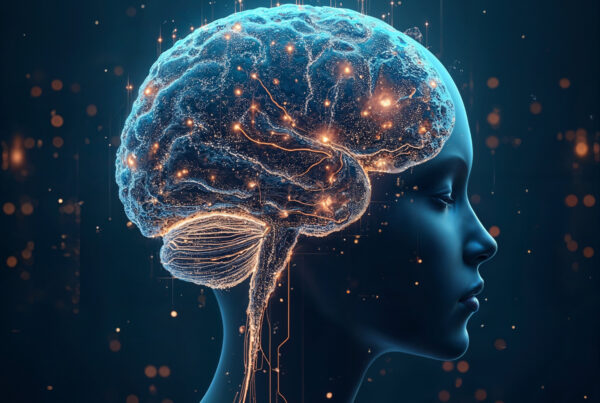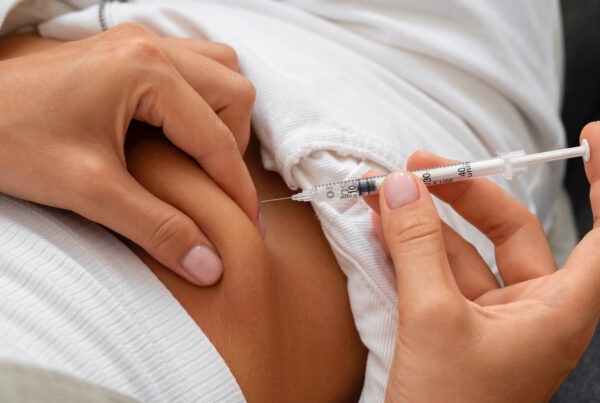In the study Increased reactivity of the mesolimbic reward system after ketamine injection in patients with treatment-resistant major depressive disorder by Sterpenich et al. (2019), researchers explored how a single ketamine infusion reshapes the brain’s reward and emotional response circuitry in patients with treatment-resistant major depressive disorder (TRD). The results are striking: ketamine not only improved mood but also reactivated underperforming mesolimbic systems responsible for processing positive and negative stimuli—shifting the brain toward a more responsive and hopeful outlook.
This research underscores ketamine’s evolving role in psychiatric care, not just as a fast-acting antidepressant, but as a tool for neuroplasticity and emotional recalibration. By tapping into the neural roots of anhedonia and emotional blunting, ketamine offers new hope for individuals stuck in the intractable depths of depression.
Study Design and Participant Profile
The researchers enrolled patients diagnosed with treatment-resistant major depressive disorder. Each participant received a single intravenous bolus of ketamine. Functional MRI scans were used before and after the infusion to assess brain activity in response to positive, negative, and neutral stimuli. These tasks measured emotional reactivity and reward sensitivity in real time.
Two main tasks were used:
- A game-like reward task to evaluate responsiveness to positive reinforcement
- An emotional judgment task to assess responses to emotional cues
These allowed the researchers to pinpoint which brain regions showed changes in activity following ketamine administration.
Key Findings: A Boost in Reward Circuitry
One day after the ketamine infusion, patients displayed:
- Improved mood and global vigilance
- Faster reaction times for positive stimuli
- Greater activity in the orbitofrontal cortex, ventral striatum, and ventral tegmental area
These regions are integral parts of the brain’s reward circuit. The increased reactivity in these areas suggests a normalization of reward processing, a core deficit in depression.
The correlation between improved depression scores and enhanced reward responsiveness (R² = 0.46, P = 0.03) supports the idea that ketamine’s antidepressant effects are mediated through this network.
Emotional Recalibration in the Amygdala and Insula
 Ketamine also dampened activity in regions typically hyperactive in depression, such as the amygdala, insula, and anterior cingulate cortex, especially in response to negative stimuli. These changes suggest a reduction in the overprocessing of negative emotions—a hallmark of depressive thinking.
Ketamine also dampened activity in regions typically hyperactive in depression, such as the amygdala, insula, and anterior cingulate cortex, especially in response to negative stimuli. These changes suggest a reduction in the overprocessing of negative emotions—a hallmark of depressive thinking.
Interestingly, the modulation in these areas persisted up to one week post-infusion, highlighting the sustained effects of even a single ketamine dose.
Clinical Implications
This study delivers several key clinical insights:
- Targeting anhedonia: Ketamine may help restore interest and motivation by enhancing reward sensitivity.
- Neuroplasticity as treatment: Instead of only masking symptoms, ketamine appears to reset how emotional and reward circuits function.
- Fast action with lasting effect: Changes were observed just one day after a single dose and lasted up to a week.
Such effects point to ketamine’s potential as more than a band-aid solution—it could be a reset button for brains stuck in depressive loops.
Limitations and Future Research
While promising, the study has limitations:
- Small sample size limits generalizability
- Short follow-up window does not address long-term relapse or maintenance
- Lack of active comparator like traditional antidepressants limits contextual understanding
Future research should evaluate how repeated infusions or combination therapies (e.g., with psychotherapy) affect long-term neural changes.
Conclusion
The study Increased reactivity of the mesolimbic reward system after ketamine injection in patients with treatment-resistant major depressive disorder offers a compelling neural narrative: ketamine rapidly and lastingly reshapes brain regions involved in emotional and reward processing. By enhancing the function of key mesolimbic structures and muting hyperactive areas like the amygdala, ketamine reopens access to positive emotional engagement for individuals burdened by TRD.
This neurobiological transformation supports ketamine’s role as a powerful, fast-acting treatment that goes beyond symptom relief—it rekindles the brain’s ability to feel joy, hope, and connection.
References
- Sterpenich V, Vidal S, Hofmeister J, et al. Increased reactivity of the mesolimbic reward system after ketamine injection in patients with treatment-resistant major depressive disorder. Anesthesiology. 2019;130(6):923–935. https://doi.org/10.1097/ALN.0000000000002709
- Krystal JH, Abdallah CG, Sanacora G. Ketamine: A Paradigm Shift for Depression Research and Treatment. Neuron. 2019;101(5):774–778. https://doi.org/10.1016/j.neuron.2019.02.005
- Nugent AC, Ballard ED, Gould TD, Park LT, Moaddel R, Zarate CA Jr. Ketamine has distinct electrophysiological and behavioral effects in depressed and healthy subjects. Mol Psychiatry. 2019;24(7):1040–1052. https://doi.org/10.1038/s41380-018-0028-0
- Abdallah CG, Averill LA, Salas R, et al. Prefrontal connectivity and glutamate transmission: relevance to depression pathophysiology and ketamine treatment. Biol Psychiatry Cogn Neurosci Neuroimaging. 2017;2(7):566–574. https://doi.org/10.1016/j.bpsc.2017.04.002
- Wilkinson ST, Ballard ED, Bloch MH, et al. The effect of a single dose of intravenous ketamine on suicidal ideation: a systematic review and individual participant data meta-analysis. Am J Psychiatry. 2018;175(2):150–158. https://doi.org/10.1176/appi.ajp.2017.17040472




